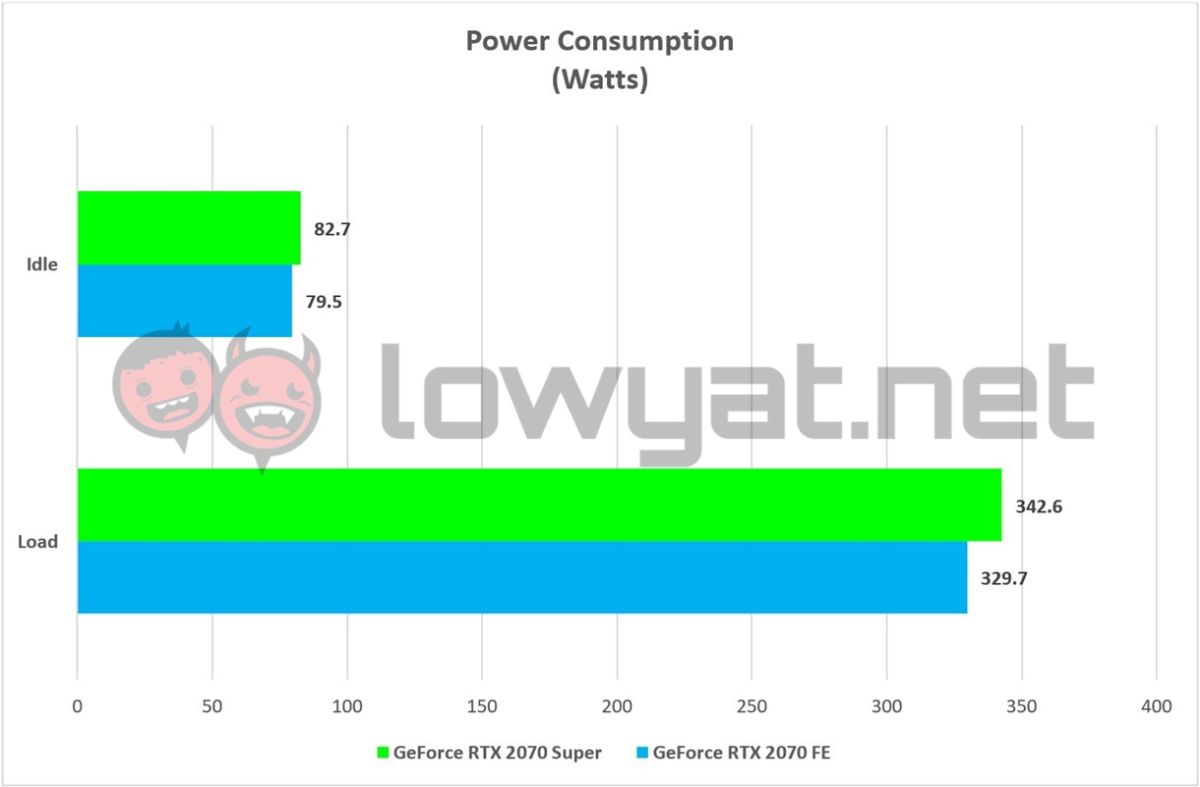NVIDIA’s announcement of its Super lineup could probably go up there with other “worst kept secret” moments. While the Twitter teaser still carried a level of mystery, everyone in the PC Gaming world knew exactly what it was: it was a rebuttal to AMD’s recently newly announced Radeon RX 5700 series graphics card.
Now, with the curtains lifted from the subject, we now know that the “Super” moniker refers to not one, but three souped-up versions of NVIDIA’s existing arsenal – the GeForce RTX 2060 Super, RTX 2070 Super, and RTX 2080 Super. And as indicated by the title of this article, we’ll be taking a deeper look into the performance of the middle child of this Super family.
Design
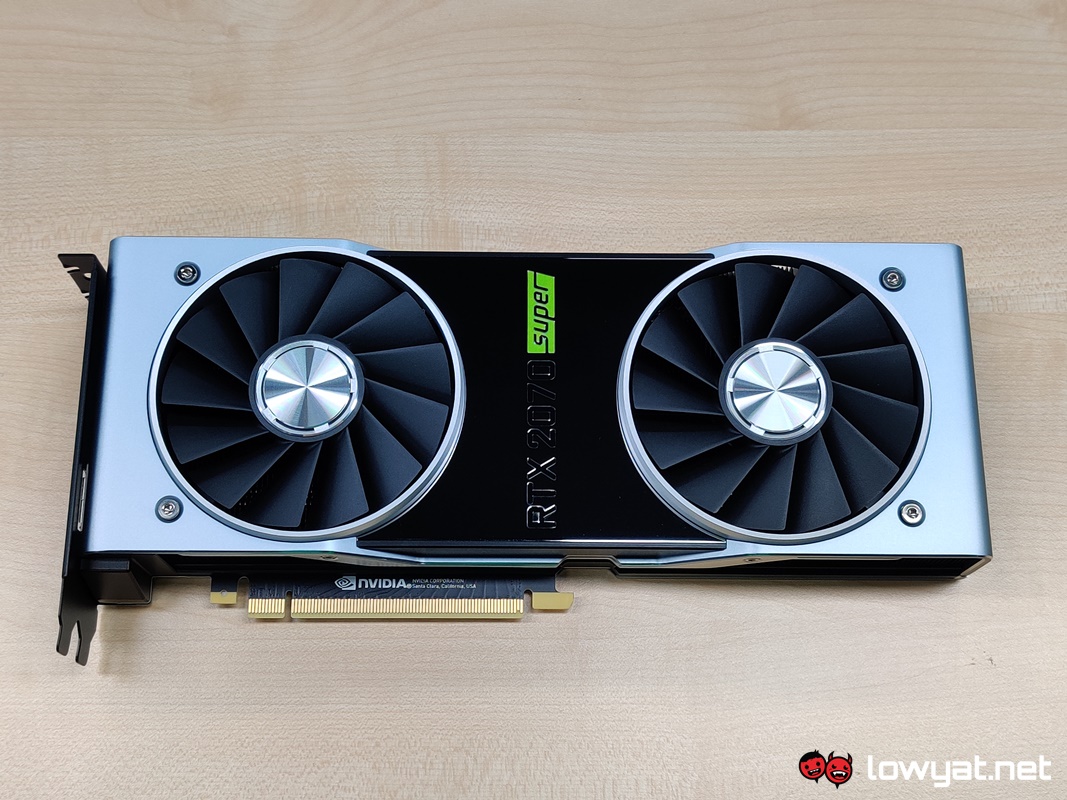
So, what is the GeForce RTX 2070 Super? To put it simply, the RTX 2070 Super is essentially an RTX 2070 that has been jacked up ever so slightly by NVIDIA. And by “slightly”, we mean that NVIDIA actually gave the card some modest improvements.
On the outside, the card’s gained a few inches in length, making just as long as the RTX 2080, and definitely longer than the original RTX 2070. Because our card is based on the NVIDIA’s Founders Edition cooler shroud, there isn’t anything extraordinary about it.

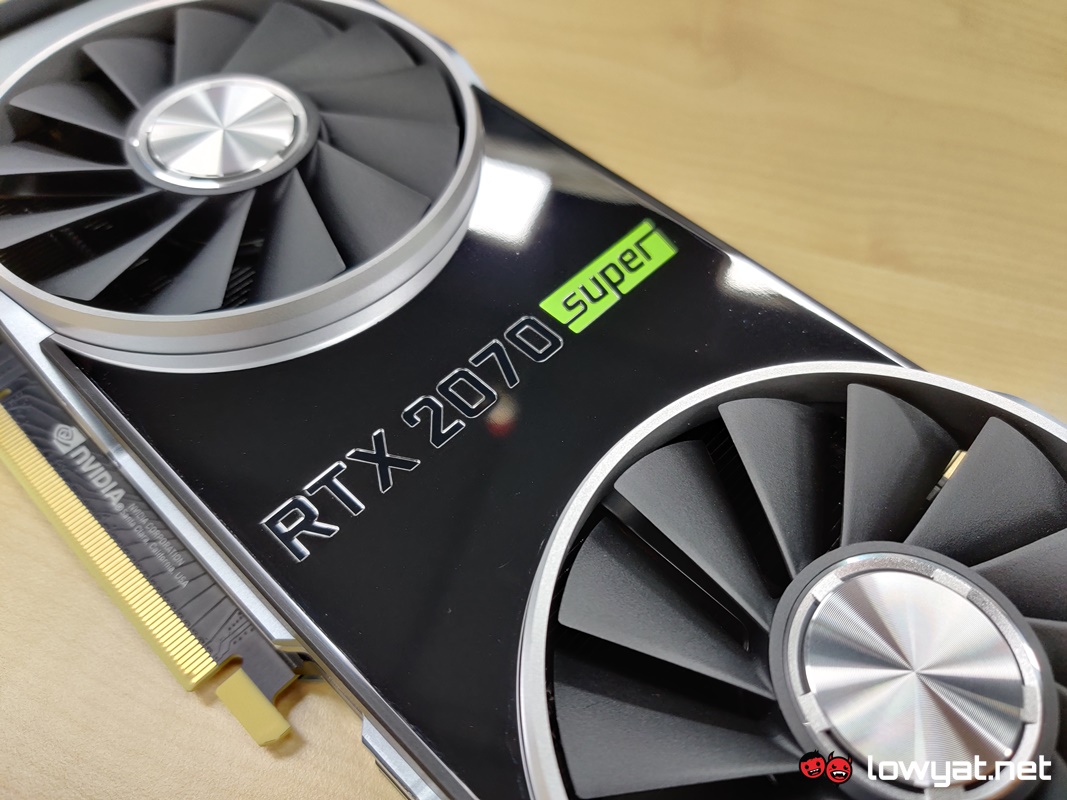
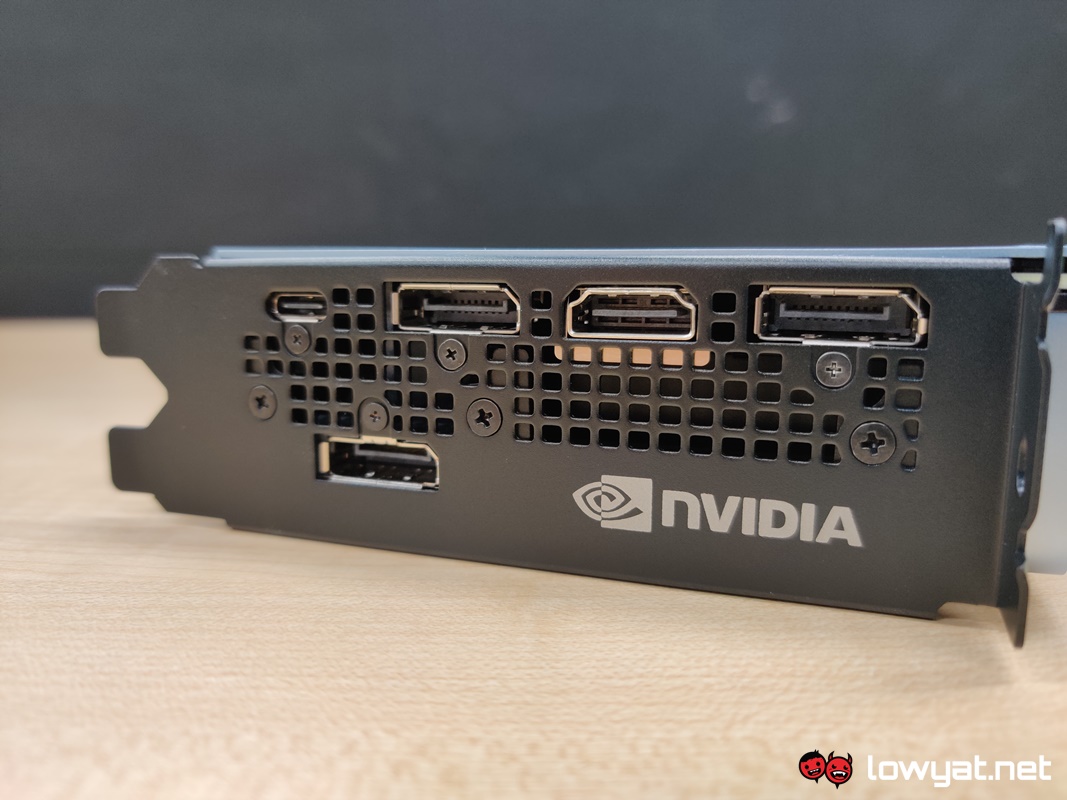
The one little aesthetic that does stand out is the cooler plate in the middle; instead of a matte black piece of plastic, the plate is now a polished piece of aluminium. Emblazoned with the “RTX 2070 Super” name right in the middle.
Accompanying the cooler plate are the usual dual blower-style fans, and powering up the card is a 8-pin + 6-pin PCIe power connector combo. The latter for reasons that will be briefly explained as you continue reading. For output, the RTX 2070 Super gets three DisplayPort 1.4 ports and a single HDMI 2.0 port. There also the USB-C Port at the edge of the grill for DisplayLink.


One important point to take note of is that – unlike the RTX 2070 – the RTX 2070 Super does come with an NVLink SLI bridge. In retrospect, the return of the SLI bridge does make the card a viable option for PC owners to expand the graphical prowess of their system with a multi-GPU configuration. However, I can’t help but think of how this can actually hurt early adopters of the RTX 2070. But let’s move on.

Compared to its non-Super variant, it’s got a higher base and boost clockspeed of 1605MHz and 1770MHz. There’s also 320 Tensor Cores embedded inside the GPU, up from the 288 Tensor Cores that shipped out with the RTX 2070. More importantly, the CUDA Core count on the RTX 2070 Super has been bumped up to 2560, from the 2304 CUDA Cores on the non-Super variant.
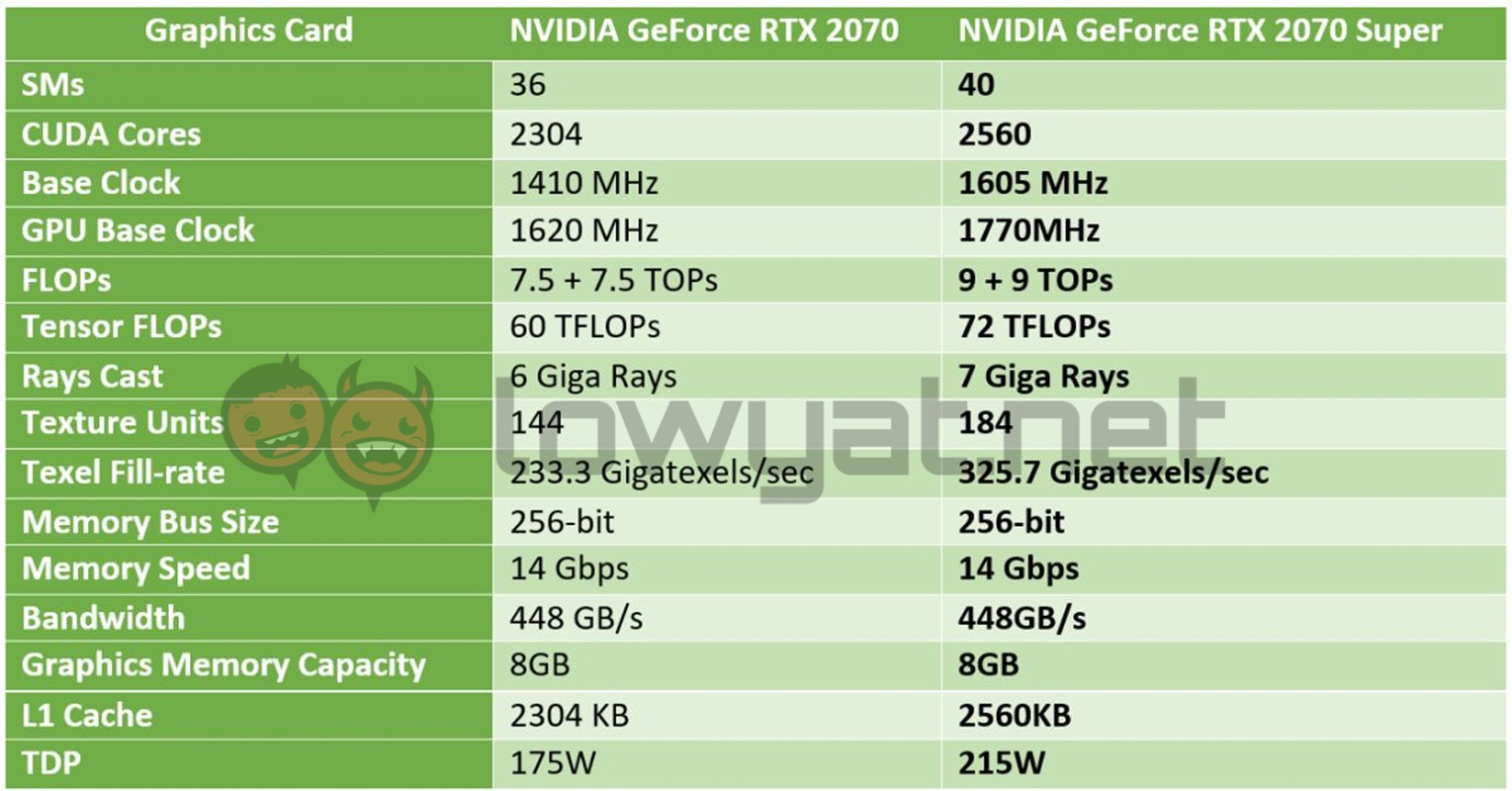
Oh, and it gets one additional Giga Ray, bringing the total number up to seven Giga Rays for the card to cast.
Graphics memory and speed remain the same as before; the card has 8GB of GDDR6, running at a speed of 14Gbps. However, due to the additional condiments and clockspeed increase, NVIDIA had to increase the TDP of the RTX 2070 Super from 175W to 215W.
Test Machine Specs

Because the RT 2070 Super is technically a successor to the RTX 2070, we thought it only fair to actually pit the two siblings against it other in a battle of benchmarks. Also, since both cards are targeted at the 1440p (2560 x 1440) market segment, our benchmarks will only cover tests done in both Full HD and 1440p resolutions.
To that end, the display we’ll be using is the ASUS ROG Swift PG27V curve gaming monitor. As seen in the specs sheet above, we’ve also made some upgrades to our test system, employing a top-of-the-line 9th generation Intel Core i9-9900K CPU. Accompanied by an ASUS ROG Maximus XI Formula and a zippy NVMe PCIe SSD from WD to boot.
As a heads-up, we won’t be showing any overclocked benchmark numbers here in this review for now. At the time of writing, we were still conducting the overclocking tests on the card, but rest assured that I will update this review with a benchmark section once the tests are completed.
Benchmarks
As per NVIDIA’s comments about its Super lineup, each iteration of the card are suppose to have between 10% and 15% more performance output than its non-Super counterpart. In the case of the RTX 2070 Super, it seems to do just that and more.
In synthetic benchmarks like UL’s 3DMark and Unigine’s Superposition, the card already pulls ahead of the non-Super RTX 2070 by several thousand points. In the Fire Strike test alone, it scored 22628; that’s nearly double the score of the RTX 2070, and definitely greater than its maker’s projected performance increment.
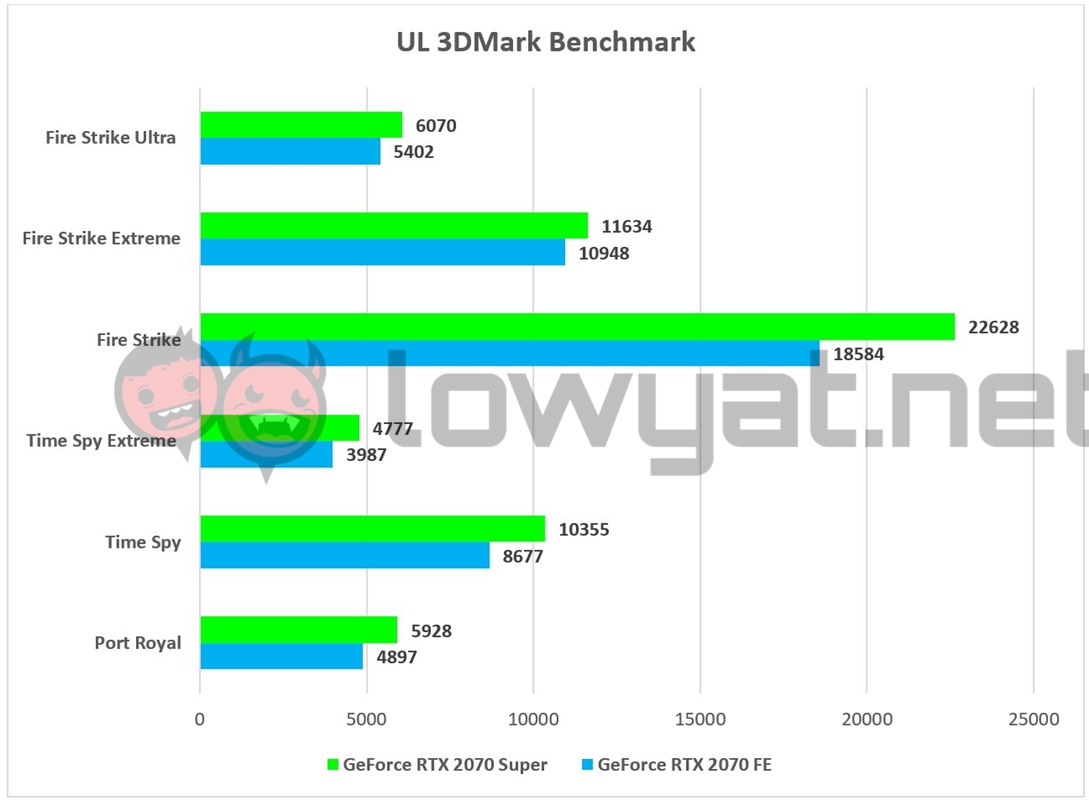

In real-world benchmarks, we tested the card on four titles: Battlefield V (BFV), Deus Ex: Mankind Divided (DXMD), DOOM, and Shadow of the Tomb Raider (SotTR). Throughout the tests, there were both good and mediocre times for the RTX 2070 Super.
In BFV, both the RTX 2070 and RTX 2070 Super held their grounds by staying above the 60 fps mark, but the RTX 2070 Super is the clear winner in both 1440p and Full HD. It’s the same story with DOOM, but having said that, the game isn’t as graphically intensive and doesn’t feature visual tweaks like ray-tracing of DLSS support.



DXMD is one of the many surprises to the equation. Rather than outperforming, the RTX 2070 Super lost out to its non-Super sibling, and by a considerable stretch too. It’s ironic too, considering that the game itself is actually tweaked to the benefit of AMD Radeon users.


Shadow of the Tomb Raider is the second game to allow us to try and flex the RT cores of both cards, especially now that the game now has the option to set the feature’s level. IN this case, we set the intensity to Ultra, and found that the RTX 2070 Super didn’t quite perform as well as we expected it to at the 1440p resolution. Falling just a few frames behind the RTX 2070.
Temperature And Power Consumption
In the case of thermals and power consumed, both the RTX 2070 Super and RTX 2070 show virtually no difference in both areas. The temperature on both cards are practically identical; if anything, the size of the RTX 2070 Super clearly alleviates that 1°C when it’s running at full whack.
The power consumption is a bit of a surprise to us, considering that the RTX 2070 Super does require slightly more juice than its non-Super brethren.
Conclusion
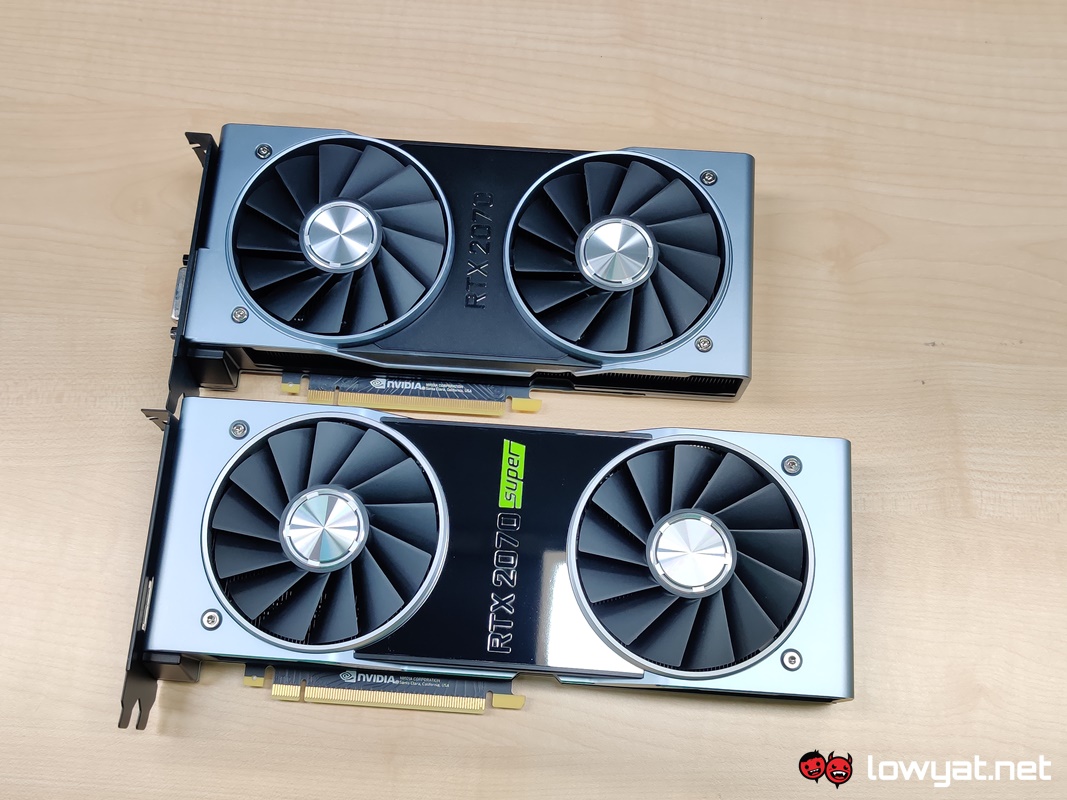
Besides being a curt response to AMD, the arrival of the GeForce RTX 2070 Super – along with other members in the family – does have its pros and cons. On the plus side, and as you’ve seen in the benchmarks, the card is clearly a step above its non-Super sibling in performance, and in more ways than one.
On the other hand, and as mentioned earlier, our heart does go out to many of the early adopters of the RTX 2070 for a multitude of reasons. Firstly, the RTX 2070 Super costs the same as its predecessor at US$499 (~RM2066), effectively making it a better deal. More importantly, it offers something that its non-Super sibling will never able to provide: multi-GPU configuration.
As per our earlier report, the RTX 2070 Super along with the RTX 2060 Super will be available from 9 July onwards.
Follow us on Instagram, Facebook, Twitter or Telegram for more updates and breaking news.




